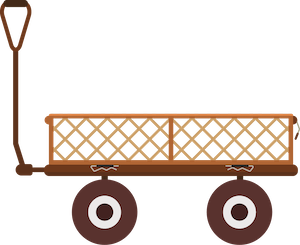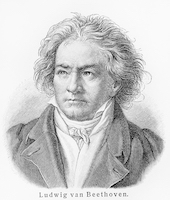Y3. Lesson 18. Practise Low so
Prior learning: Low so
Duration: 30 minutes
Materials: Cowbells, Recorders
Keywords: Beat, rhythm, singing, chanting, partners, rhymes, circle games.
Difficulty: ![]()
Prepare
Present
Practise
Low so
 Melodic development
Melodic development
![]() Students discover where low so is found in a known classroom song.
Students discover where low so is found in a known classroom song.
- Lead the class in singing the song.
- When secure, sing the first measure and ask the class to repeat after you.
- Ask where the lowest note is found in that measure.
- Teach that this low note is called low so, a step below low la.
- Project the score and point out low la and low so in the first measure.
- Sing the song again with the class, pointing to low so on the board.
- Ask how many times low so is found in the song [4].
- Choose a student to sing the song and point to low so.
- Ask students to sing and use hand signs.

 Rhythmic development
Rhythmic development
![]() Students discover a cowbell from Ghana and the sounds it makes.
Students discover a cowbell from Ghana and the sounds it makes.

- Distribute cowbells (or similar instruments) to the class.
- Play the video of the expert musician from Ghana explaining how the cowbell is used in his country.
- Divide the class into three groups and demonstrate how to hold the cowbell and the beater.
- The first group keeps a steady beat to a moderate tempo.
- The second group will play an ostinato pattern, such as ta, ta, ti-ti, ta.
- The third group will play a different ostinato pattern, such as ti-ti, ti-ti, ti-ti, ta.
- Each group will practise separately until secure.
- On your command, the first group begins, followed by the second and third groups. This might be a noisy exercise but a lot of fun!
- Swap out the groups so every student plays at least two patterns.
 Creative movement
Creative movement
![]() Students form circles and sing a song in canon.
Students form circles and sing a song in canon.
- Lead the class in singing the song with students in a circle.
- Students will march around the circle, keeping time with their feet and singing.
- When secure, form a second smaller group. This group will sing in canon, one measure after the larger group begins again.
- When secure, create a third group who will sing in canon one measure after the second group.
 Listening
Listening
![]() Students improvise new lyrics after listening to a known classroom song.
Students improvise new lyrics after listening to a known classroom song.
- Project or print the worksheet.
- Explain that you want the class to make up some new lyrics or words for Old Brass Wagon.
- Teach that this is called improvisation.
- Sing the first verse and ask a volunteer to replace the word 'brass' with another one-syllable word.
- The class should sing the verse with the new lyric.
- In the second example, ask a volunteer to find two words to replace 'brass wagon'. The first word should be one syllable, and the second should have two syllables.
- The class should sing the verse with the new lyrics.
- In the third example, four short one-syllable words, such as 'look in the shed,' are needed.
- Repeat the process with as many volunteers as possible.
- If the worksheet is printed, students should write their improvised lyrics on the sheet.
 Visual learning
Visual learning
![]() Students discover where to write low so.
Students discover where to write low so.
- Project or print the worksheet. Remind the class that low so is a skip and a step below do.
- Teach that in every example, do is shown, and students must indicate where low so is to be found.
- If projected, ask a volunteer to identify low so by coming forward and pointing to the correct line or space in each case.
- If printed, students should draw the correct position of low so in every case.

 Instruments
Instruments
![]() Students continue to explore new material for the recorder.
Students continue to explore new material for the recorder.
- This lesson builds on students' prior learning with the notes B, A, G, C and D.
- This is a beautiful melody from the great composer Beethoven.
- This example is a simpler variation of the melody.
- Demonstrate how to play the song, drawing students' attention to the correct fingering and the use of gentle tonguing technique without squawking or overblowing.
- Have students play the song at a moderate tempo and monitor their performance, timing and technique.

 Part work
Part work
![]() Students sing and use body percussion for a song in 3-metre.
Students sing and use body percussion for a song in 3-metre.
- Lead the class in singing Oranges & Lemons.
- Ask if the song is in 2-metre, 3-metre or 4-metre [3].
- When secure, teach a body percussion pattern.
- Examples might include:
"Oranges & [stamp, stamp, stamp]
lemons," said the [pat, pat, pat]
bells of St. [snap, snap, snap]
Clem-ents. "You [pat, pat, pat]
owe me five [stamp, stamp, stamp]
far - things," say the [pat, pat, pat]
bells of St. [snap, snap, snap]
Mart-ins. [stamp, stamp, stamp]
- Any simple combination of body percussion elements will work in this first part work exercise in 3-metre.
 Assess
Assess
Suggested lessons
Y1. Beat II

Y1. Beat III

Y1. Beat IV

